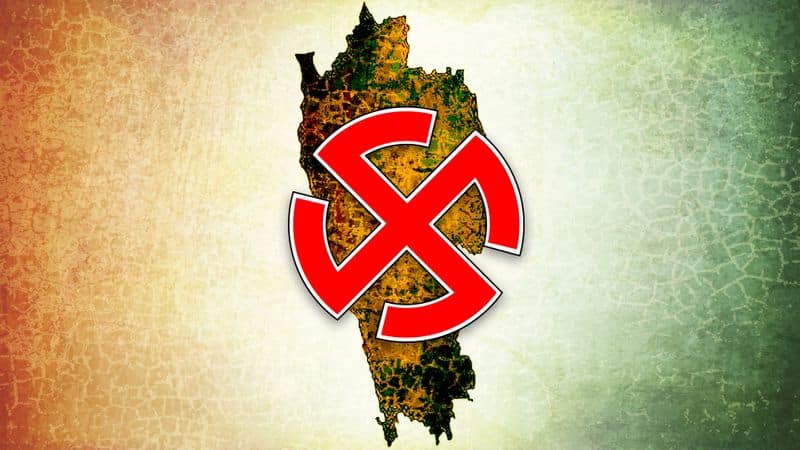While the Congress is fighting to retain its last hold in the Northeast, BJP-led North East Democratic Alliance (NEDA) convenor and Assam finance minister Dr Himanta Biswa Sarma is confident that the BJP will be in part of the new government in Mizoram
Guwahati: Will the Congress able to save its last bastion in the Northeast and retain power in Mizoram? Or will history will repeat itself in the Christian-dominated Northeastern state?
The election to the 40-member Mizoram Legislative Assembly was held on November 28 with over 80% turnout and results will be declared on December 11.
The Congress and the Mizo National Party (MNF) have ruled the state since 1987, when it became a full-fledged state, and no party has been able to form the government thrice since 1987.
While the Congress is eying to script a new political history in Mizoram and incumbent chief minister Lal Thanhawla is seeking a third consecutive term, the Bharatiya Janata Party is looking to uproot the Congress in its last bastion in the Northeast.
In 2013, the Congress had won 34 seats, while Mizo National Front (MNF), the main opposition party, got 5. One was bagged by Mizoram People’s Conference (MPC).
Besides facing anti-incumbency, the Congress is also facing big challenges from the main opposition party, MNF, in this election.
Replacing the Mizoram Liquor Total Prohibition Act of 1995 has turned out to be a big electoral issue and the MNF and the BJP’s ally, Zoram People’s Movement, had raised the issue during campaigns and promised to the people of Mizoram to bring about a total prohibition if voted to power.
On the other hand, the BJP is hoping to play a balancing role as the results are throwing up a hung Assembly.

The main fight will be between the Congress and MNF, but the BJP hopes to play an active role to form the new government.
While the Congress is fighting to retain its last hold in the Northeast, BJP-led North East Democratic Alliance (NEDA) convenor and Assam finance minister Dr Himanta Biswa Sarma is confident that the BJP will be in part of the new government in Mizoram.
Sarma, who is also BJP’s in-charge for Mizoram election, said that there will be no new government in Mizoram without the support of the BJP. “The BJP will open account strongly in Mizoram. But I think that there will be no new government in Mizoram without support or active participation of the BJP,” Sarma said.
In this election, the ethnic community voters in India’s second least population state like Chakmas, Brus would likely to be played a crucial role as the Chakmas, Lais and Maras, together comprising over 10% of the total population.
The Christians comprise 87% of Mizoram’s total population.
On the other hand, the Bru voters are spread over nine constituencies in Mizoram.
In Mizoram, average voters per seat are 19,000 and the nine constituencies where Bru voters are from, form a sizeable presence. The highest number of Brus are registered in Mamit district which has Hachhek, Dampa and Mamit constituencies with 14% of the total voters being refugees and followed by Kolasib district with 3.5% of its total voters and the district has Tuirial, Kolasib and Serlui Assembly seats.
In Lunglei district, less than one percent of the total voters are Bru refugees.
55% of 11,232 registered Bru refugee voters cast their votes in the recent election.
The Bru refugees are staying at six relief camps in Tripura after the ethnic clashes of 1997.
Eying to get support from the ethnic community voters, the BJP had concentrated in the ethnic community-dominated areas.
It is to be mentioned that the BJP has not able to win a single seat in previous elections, but the saffron party makes its route to Mizoram after forming the Chakma Autonomous District Council this year with support from the Congress.
“If we get a respectable number of seats, then we have lot of options to secure the majority. We have many friends in all political parties including Congress, Mizo National Front (MNF) and Zoram People’s Movement (ZPM). If we are short of few seats to form the government, it should not be a problem,” Sarma said.
Traditionally, the Chakmas and Brus have voted to Congress, but this time the traditions have been changed.
Now all are waiting for the results to be declared on December 11.
Last Updated Dec 7, 2018, 7:53 PM IST











![Salman Khan sets stage on fire for Anant Ambani, Radhika Merchant pre-wedding festivities [WATCH] ATG](https://static-ai.asianetnews.com/images/01hr1hh8y86gvb4kbqgnyhc0w0/whatsapp-image-2024-03-03-at-12-24-37-pm_100x60xt.jpg)
![Pregnant Deepika Padukone dances with Ranveer Singh at Anant Ambani, Radhika Merchant pre-wedding bash [WATCH] ATG](https://static-ai.asianetnews.com/images/01hr1ffyd3nzqzgm6ba0k87vr8/whatsapp-image-2024-03-03-at-11-45-35-am_100x60xt.jpg)



